- Share
- Like
- Tweet
- Digg
- Tumblr
- VKontakte
- Love This
- Odnoklassniki
- Meneame
- Blogger
- Amazon
- Yahoo Mail
- Gmail
- AOL
- Newsvine
- HackerNews
- Evernote
- MySpace
- Mail.ru
- Viadeo
- Line
- Comments
- SMS
- Viber
- Telegram
- Subscribe
- Skype
- Facebook Messenger
- Kakao
- LiveJournal
- Yammer
- Edgar
- Fintel
- Instapaper
- Copy Link
Australian studio Francis-Jones Morehen Thorp (fjmt) has designed the Bankstown Library and Knowledge Centre (BLaKC) through the adaptive reuse, salvage, recycling and renovation of the existing Bankstown Town Hall in New South Wales. Located in the heart of the city, the library creates a rich spatial experience for the community.

Image © Christian Mushenko
The architects were commissioned “to create a sustainable building with a distinct architectural character and to develop an accessible and inviting public space”. The design took inspiration from the surrounding landscape, transforming the library into a welcoming space that goes beyond the main functions of a library.
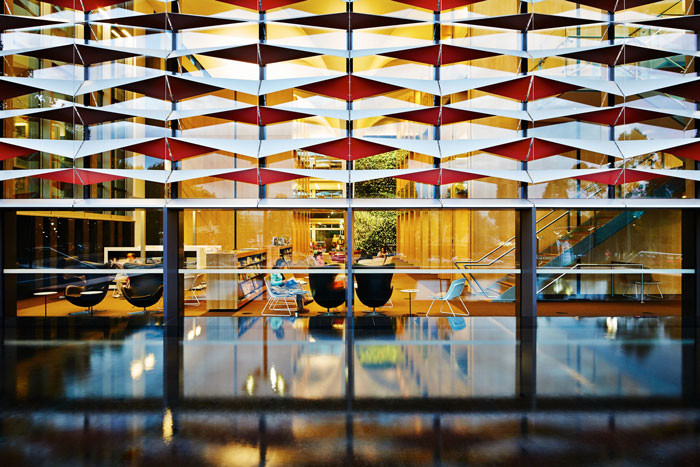
Image © Christian Mushenko
We wanted to make an open and inviting new library that is a little like gathering under the canopy of two great trees, with the folded patterning of red and aluminium sunscreens similar to the shade given by the patchwork of leaves.
– Francis-Jones Morehen Thorp
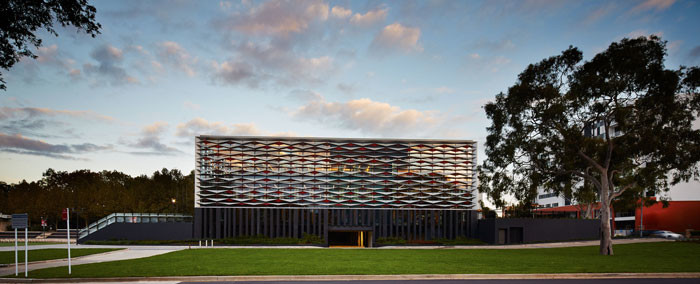
Image © Christian Mushenko
The sustainable building houses the new library over three levels, a three-hundred seat theatre, community conference facilities, as well as a new cafe. Adjacent to the building, the Paul Keating Park was redeveloped to include an aquatic sculpture garden, new street trees and off-street parking for sixty-four cars and an all weather bus drop-off zone.
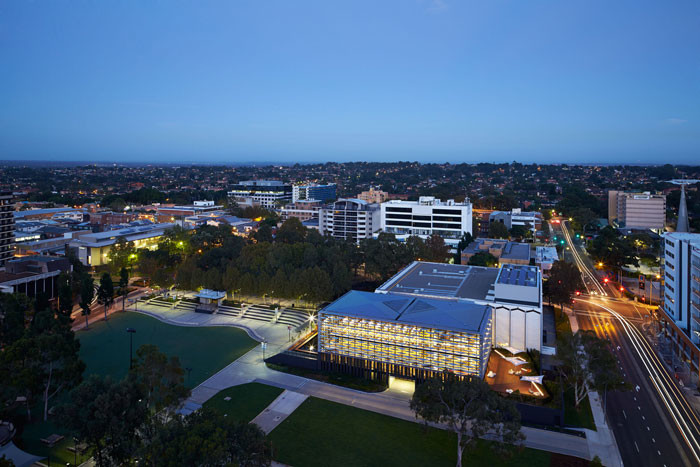
Image © Christian Mushenko
The new building was connected to the existing Town Hall. Demolishing the existing auditorium cleared the way for the new library form to be projected forward on the podium. This enabled a new articulation of the northern and southern edges of the building to define the new urban spaces in and around the immediate footprint of the building.
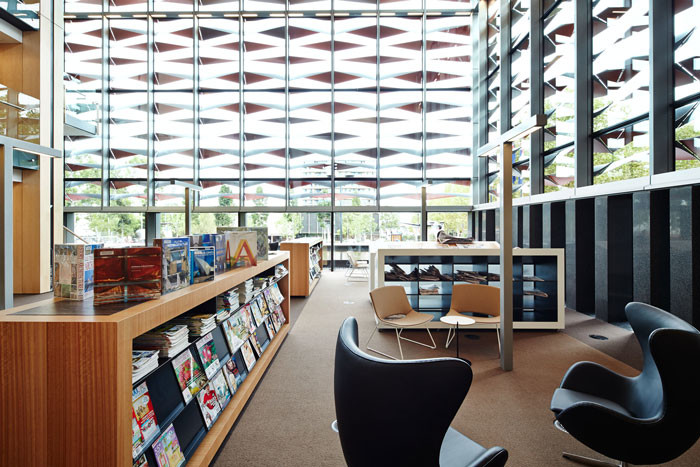
Image © Christian Mushenko
Our approach merges adaptive reuse with an optimized demolish, rebuild, salvage and recycle strategy, to sympathetically restructure the formal arrangement of the development.
– Francis-Jones Morehen Thorp
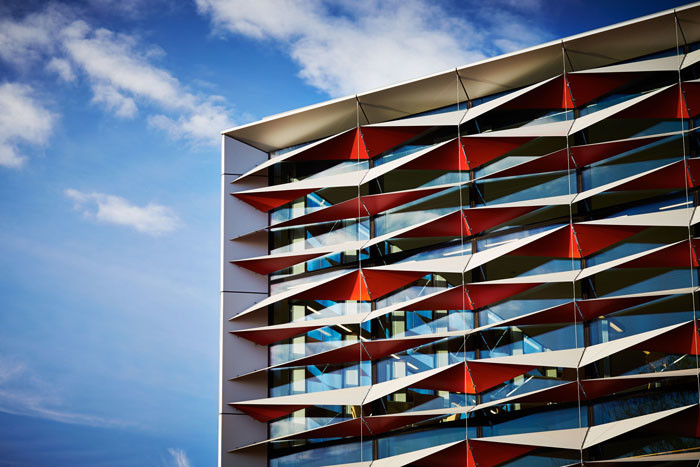
Image © Christian Mushenko
The project made use of high quality materials salvaged from the existing Town Hall such as Australian hardwood timbers, precast concrete facade panels, aluminum roof sheeting, and even stainless steel joinery. From initial stages the architects focused on creative ways to use the salvaged materials in order to minimize unnecessary demolition and waste. Over 95% of the internal wood floor finishes are salvaged materials from the existing structure.
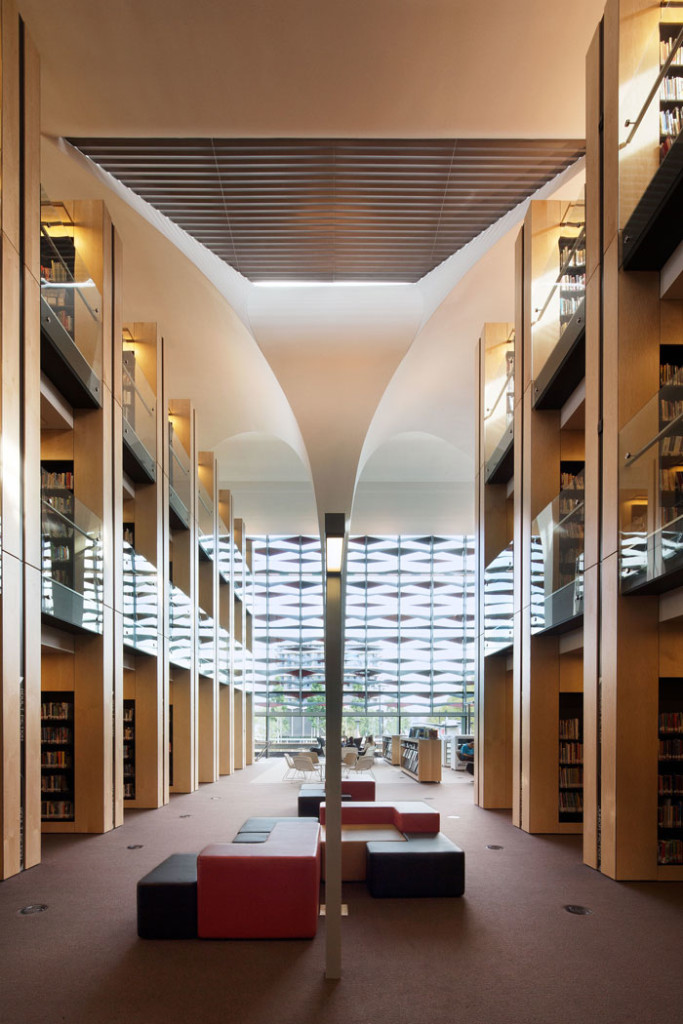
Image © Christian Mushenko
The reuse and recycling of materials led way to defining the interior of the library. The central atrium is defined by two curvaceous feature columns (trees) with their sinuous level 5 plaster forms rising from the salvaged structural timber pedestals. These sculptural timber forms parabolically spread upward toward the canopy of acoustically perforated surfaces and integrated skylights.

Image © Christian Mushenko
One of the main features of the space is an indoor green wall that does not only add visual interest and colour, but also optimizes air quality by filtering impurities and minimizing water use.
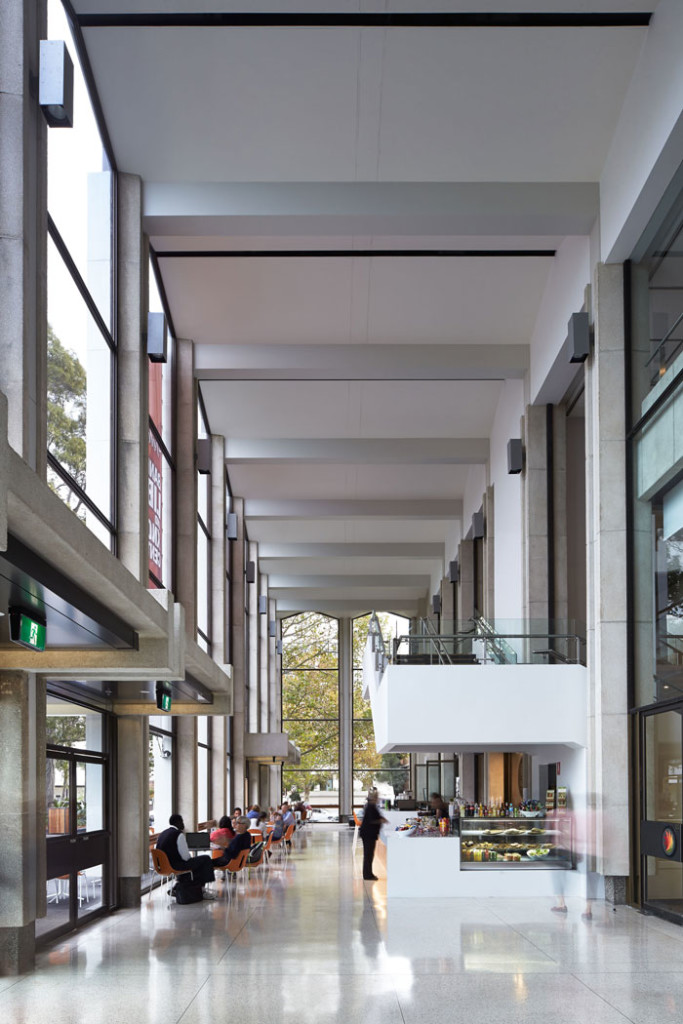
Image © Christian Mushenko
The ground floor reading areas offer stunning views of the aquatic sculpture garden, and were designed to be flexible in hosting activities such as poetry readings and musical performances. The surrounding landscape and glazing facade connects the building with the community, creating an oasis within the centre of the city.
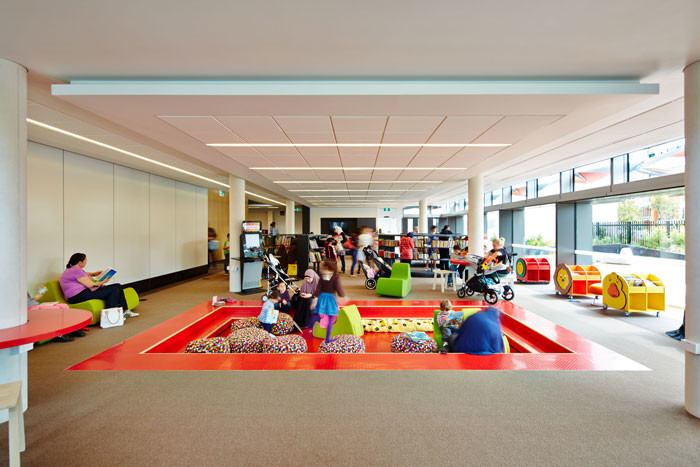
Image © Christian Mushenko
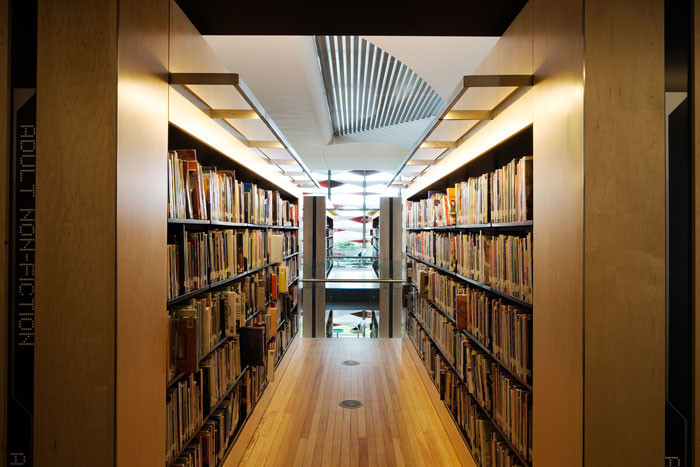
Image © Christian Mushenko
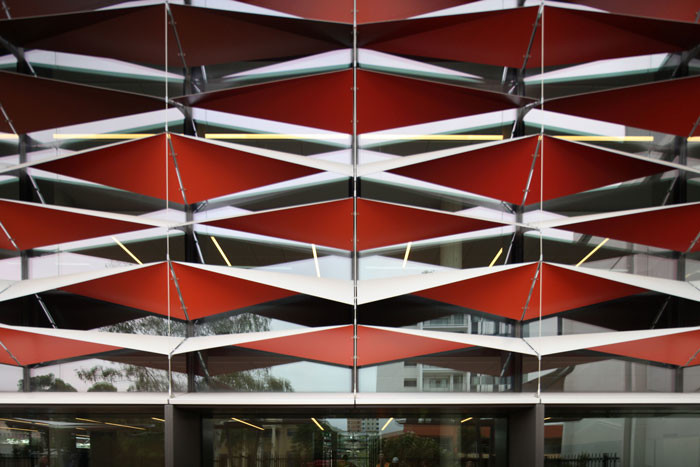
Image © Christian Mushenko
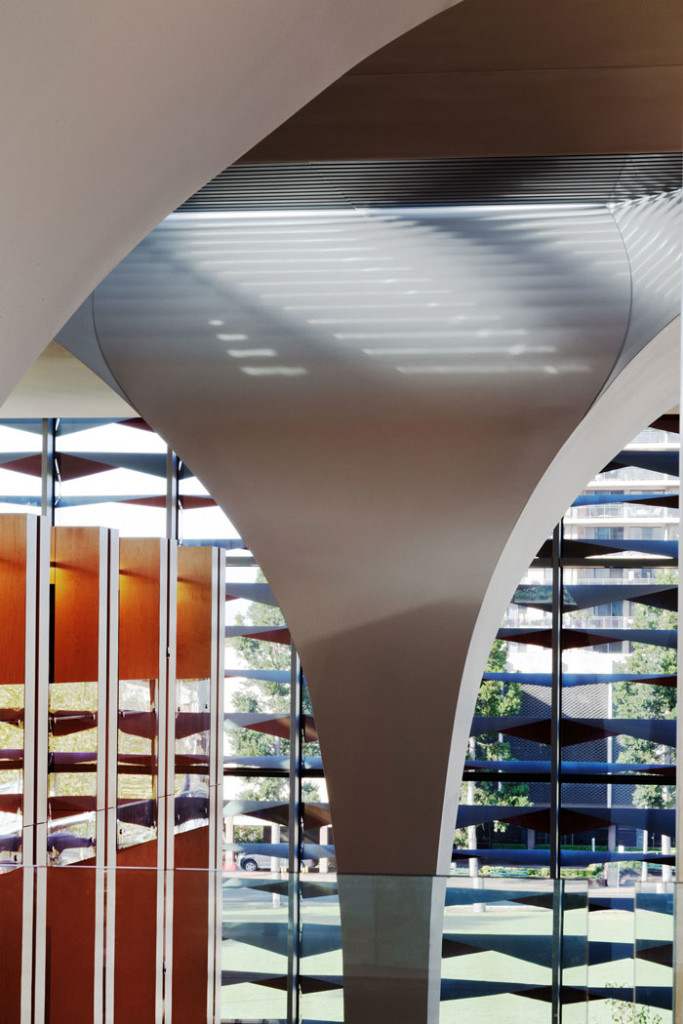
Image © Christian Mushenko

Image © Christian Mushenko

Image © Francis-Jones Morehen Thorp

Image © Francis-Jones Morehen Thorp
